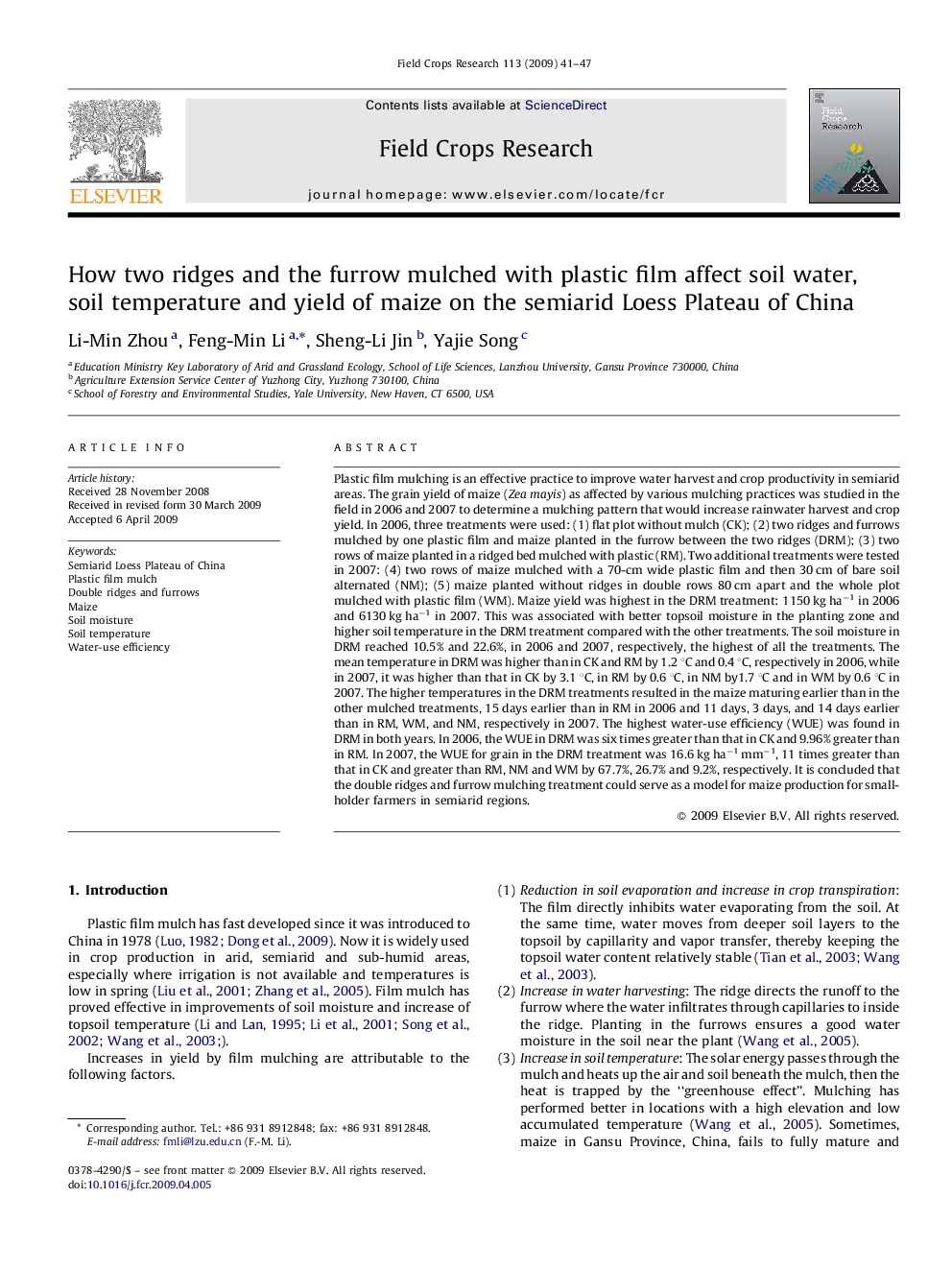| Article ID | Journal | Published Year | Pages | File Type |
|---|---|---|---|---|
| 4511184 | Field Crops Research | 2009 | 7 Pages |
Plastic film mulching is an effective practice to improve water harvest and crop productivity in semiarid areas. The grain yield of maize (Zea mayis) as affected by various mulching practices was studied in the field in 2006 and 2007 to determine a mulching pattern that would increase rainwater harvest and crop yield. In 2006, three treatments were used: (1) flat plot without mulch (CK); (2) two ridges and furrows mulched by one plastic film and maize planted in the furrow between the two ridges (DRM); (3) two rows of maize planted in a ridged bed mulched with plastic (RM). Two additional treatments were tested in 2007: (4) two rows of maize mulched with a 70-cm wide plastic film and then 30 cm of bare soil alternated (NM); (5) maize planted without ridges in double rows 80 cm apart and the whole plot mulched with plastic film (WM). Maize yield was highest in the DRM treatment: 1150 kg ha−1 in 2006 and 6130 kg ha−1 in 2007. This was associated with better topsoil moisture in the planting zone and higher soil temperature in the DRM treatment compared with the other treatments. The soil moisture in DRM reached 10.5% and 22.6%, in 2006 and 2007, respectively, the highest of all the treatments. The mean temperature in DRM was higher than in CK and RM by 1.2 °C and 0.4 °C, respectively in 2006, while in 2007, it was higher than that in CK by 3.1 °C, in RM by 0.6 °C, in NM by1.7 °C and in WM by 0.6 °C in 2007. The higher temperatures in the DRM treatments resulted in the maize maturing earlier than in the other mulched treatments, 15 days earlier than in RM in 2006 and 11 days, 3 days, and 14 days earlier than in RM, WM, and NM, respectively in 2007. The highest water-use efficiency (WUE) was found in DRM in both years. In 2006, the WUE in DRM was six times greater than that in CK and 9.96% greater than in RM. In 2007, the WUE for grain in the DRM treatment was 16.6 kg ha−1 mm−1, 11 times greater than that in CK and greater than RM, NM and WM by 67.7%, 26.7% and 9.2%, respectively. It is concluded that the double ridges and furrow mulching treatment could serve as a model for maize production for small-holder farmers in semiarid regions.
